Because I have such a huge backlog of pictures and experiences to share, and I don’t have time to make such involved galleries as I did for Inle Lake and Bagan, I’m going to try something new – a lightning round of posts.
For each location that I visited, I’ll create a post including 5 pictures or less, choosing the sights and experiences that most deeply impressed me.  The only exceptions I’ll make are for stories with an environmental theme. In those cases I may include more than 5 pictures.
Here’s the first one – Langkawi Island, Malaysia. Â Langkawi is located on the northwest coast of peninsular Malaysia. Â It’s a well an over-developed island paradise, with extensive white-sand beaches, waterfalls, mountains, and plenty of clear blue seas for watersports. Â As soon as you get off the ferry, rent a Kia hatchback or a scooter and the island is yours!
The other great thing about Langkawi is that it’s the only place in Malaysia where alcohol is duty free.
The first picture, above, shows  a viewing bridge at the top of the Langkawi cable car.  From the bridge I could see much of the island as well as the limitless blue sea.  But the best part of standing on the bridge wasn’t the view.  It was closing my eyes and letting the sound and touch of the sea breeze overwhelm my senses, feeling as though I was hovering in between that opening in the mountains, high above the canyon below.
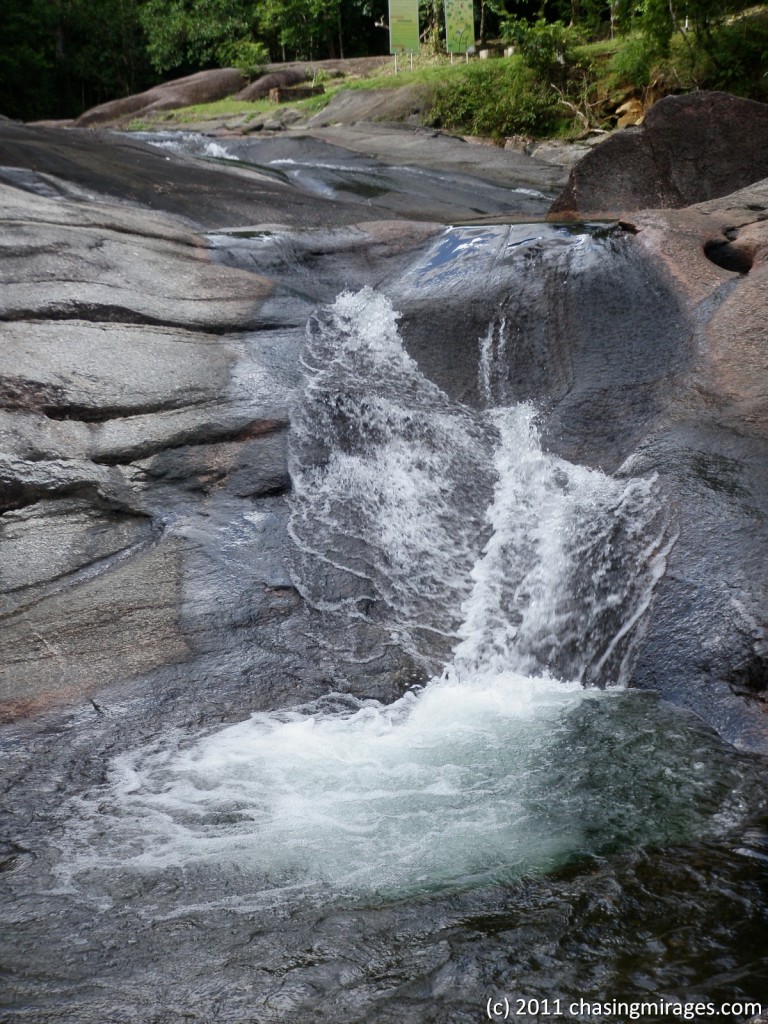
Telaga Tujuh, or Seven Wells Waterfall, is nature's water park. Above the deadly vertical cataract is a series of pools, some swimmable, connected by smooth slopes - perfect waterslides.
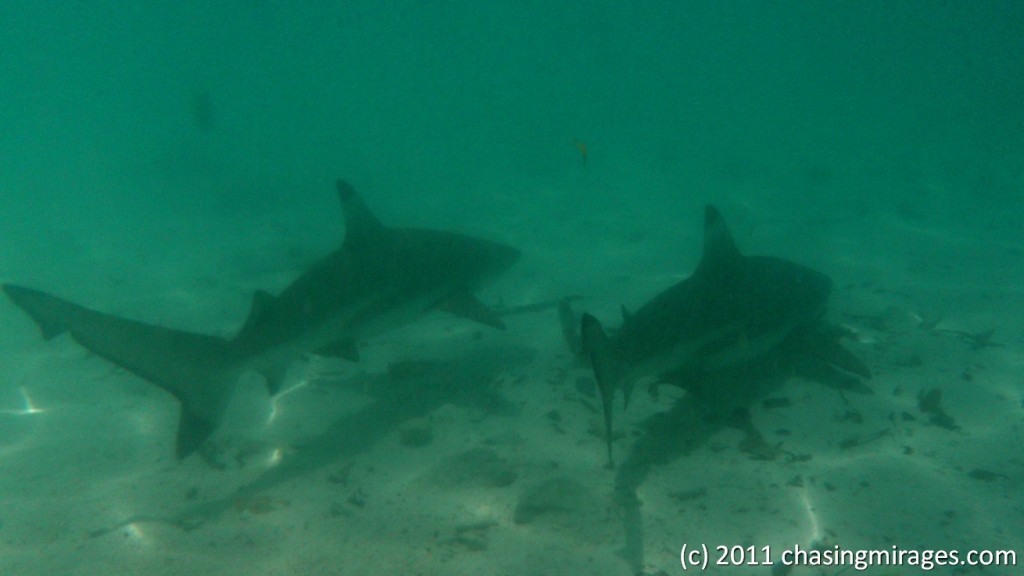
I snorkeled for the first time in my life at the nearby Pulau Payar Marine Park. It was fantastic. I'm not sure what these sharks ate; I didn't see them attacking other fish, nor did I lose any fingers or toes. I learned later that much of the coral here is already dead, victims of too much love. Before handing out snorkeling equipment, guides should be required to give tourists a brief lesson about how to minimize damage to the coral. Additionally, the number of tourists each day should be limited to some scientifically determined number.
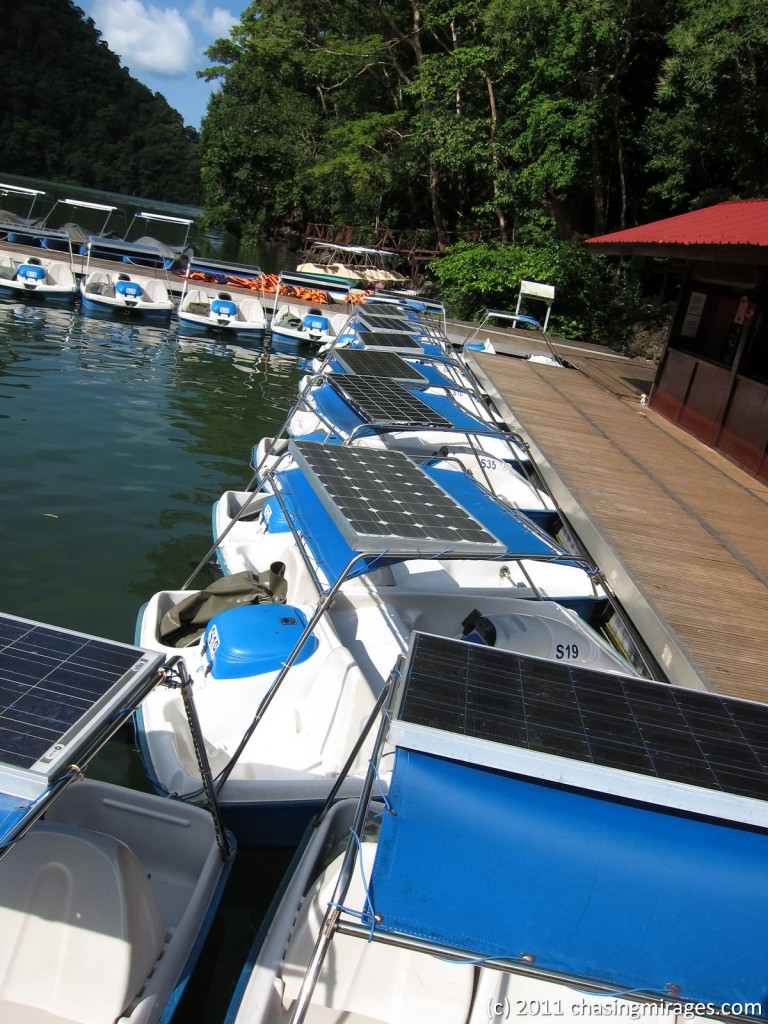
Solar-powered paddleboats at the Lake of the Pregnant Maiden on Pulau Dayang Bunting. The solar powered motors completely undermine the meaning of "paddle-boating", but still better than using non-renewable energy to feed our laziness.
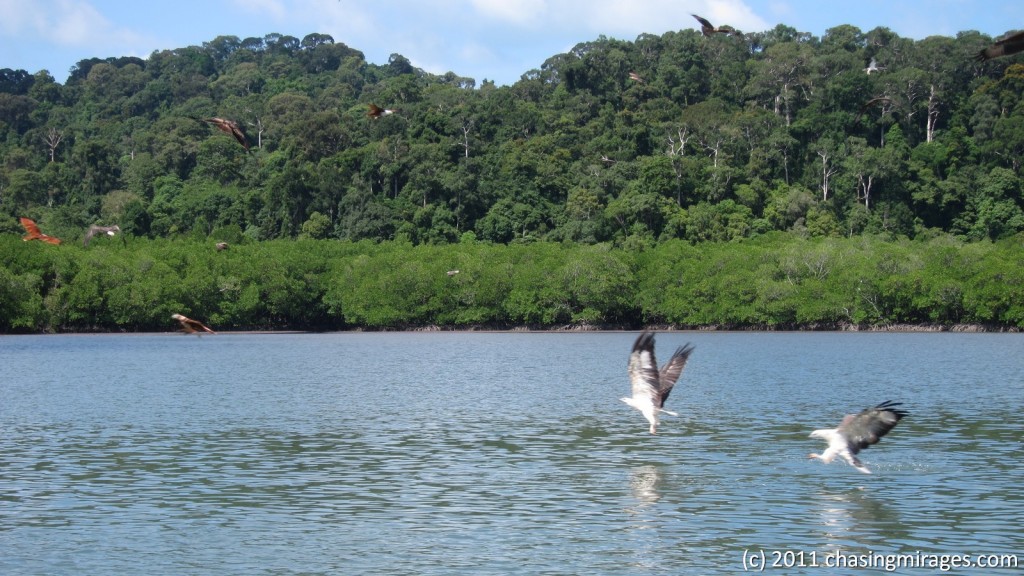
Eagles feeding on raw meat thrown in the water by our boat driver. I'm not sure whether this practice is great for the local ecology, but I have to admit, it was exciting to see hundreds of eagles circling in the air and swooping to the sea.
Note: A commenter with much more knowledge about Langkawi’s environmental issues has informed me that the eagle feeding is clearly detrimental to local ecology. Please take a look at this video explaining some of the reasons why.  Thanks to Robyn for the comment which you can read below.
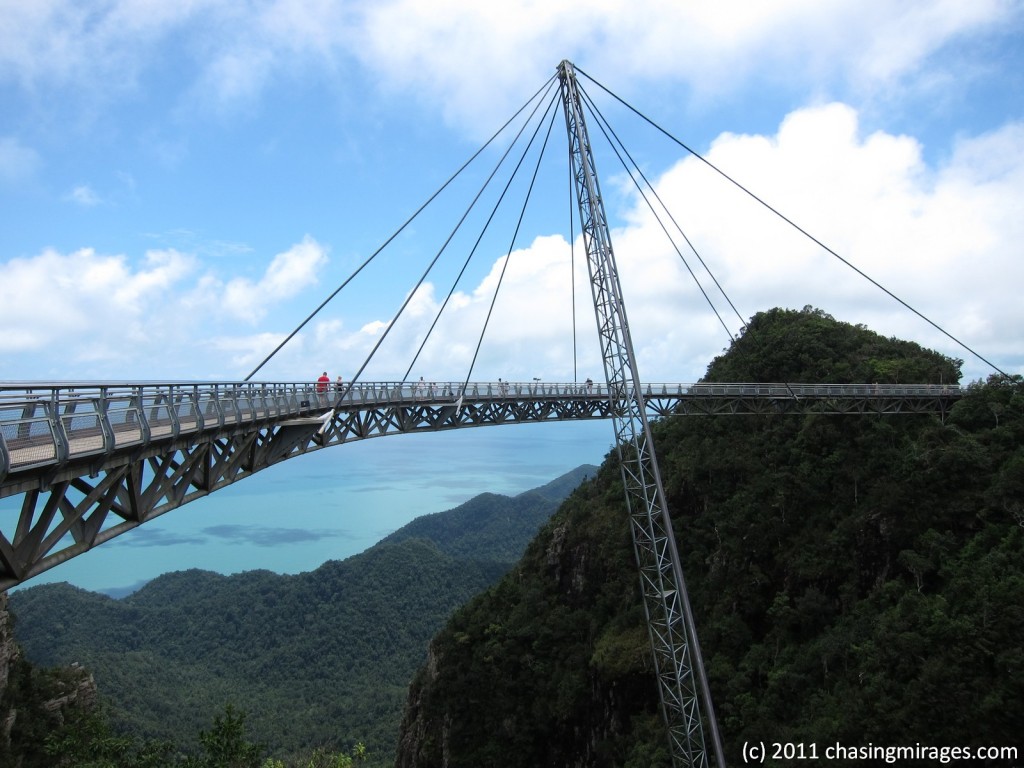
September 28, 2011 at 22:13
Chaser,
I for one, was not disappointed with your post.
As Robyn points out, the locals may be participating in inexcusable environmental destruction, however, that doesn’t take away from the seemingly transcendent moments you experienced in the Langkawi Island paradise. I could almost feel myself there with you, enjoying the sensations high atop the cable car viewing bridge. Or the palpable excitement of seeing sharks on your very first snorkeling trip. Fantastic!!
As a relatively seasoned, ecologically conscientious traveler, there are lots of things I would change about all the places I’ve been to create more sustainable, environmentally friendly practices. Yet to deny the truly rare moments when you’re blown away by a location’s majesty and grandeur is, I feel, missing the point. After all, these are the experiences that motivate preservation and recruit others to the cause.
I look forward to more vicarious experiences through your coming posts. Keep up the great work!!
September 29, 2011 at 00:17
Dear Mo,
Thanks for your kind words! I’m glad you weren’t disappointed, but I really do appreciate Robyn’s info and opinions as well. I always wish that readers would more regularly express their reactions to my posts, whether positive or negative. I’m often wrong and I often miss things, so it’s always wonderful to learn from all of you!
Also, you’ll be glad to hear that I learned how to make organic goat cheese. One step closer to the dream!
-Chaser
September 28, 2011 at 12:55
I enjoy your blog (silently till now) but I am disappointed by this post.
Langkawi is an environmental ticking time bomb,a natural treasure slowly being eaten away by greed and stupidity.
The eagle feeding is most certainly not good for the local ecology, and local environmentalists have petitioned the govt to end it, to no avail of course. The gzillions of speedboats churning through what’s left of the mangroves are an issue as well (as is illegal cutting of mangroves to make charcoal).
If you were on the north shore out to sea you might have noticed the giant letters spelling Langkawi Unesco Geopark nailed right onto the karst formations — a nice touch.
At the entrance to the tram is a giant hawk tethered by his leg to a pole so that you can have your picture taken with it (very eco-friendly!) and a couple monkeys on chains.
Poaching of giant hornbills by locals is rampant, and the state/locality does not fund enough park police to deal with it.
Most alarmingly, a huge swathe of virgin jungle on the north shore near/around the Datai Resort has been approved for development into a new resort (a Shangri-La) and a gated community of luxury villas. Clearing has already begun.
The Unesco Geopark tag is a joke, cynically used by authorities to boost tourism while at the same time ignored for its prohibitions on environmentally dangerous development — and everyone on Langkawi with a love for its forests, jungles, mangroves, and clear blue water knows it.
(I do agree with you abt the duty-free booze though.)
September 28, 2011 at 19:47
Dear Robyn,
Thanks much for your comment! You are understandably disappointed by this post. As made clear by your comment, I am completely ignorant about the environmental problems plaguing Langkawi. My only excuse (and it is a poor one that could easily have been overcome by greater vigilance) is that I was only there for a few days and had the attitude of a visitor only superficially observing and enjoying the island.
I also visited the Perhentian Islands, and perhaps because of their smaller size, I felt the over-development and unsustainable exploitation there was even more apparent than on Langkawi. I’ll warn you now that my visit there was also quite superficial, so you’re likely to be disappointed by my future post about the Perhentians as well. But I do promise to read up on what local environmentalists are working on there before I write!
Please comment more frequently! I learned a lot from what you wrote.
-Chaser
September 29, 2011 at 16:35
Chaser – Thanks for taking my comment in the spirit in which it was intended. And I understand your time was short.
Mo — yes, it’s important to write about (and wonderful to read about) the majesty and those transcendent moments. But if folks who are into the environment are reading this blog, it would be great if they knew the threats posed to Langkawi’s natural wonders. No one will be recruited to “the cause” on Langkawi if they don’t know that there’s reason for concern about its environment.
Cheers to both of you.
Robyn